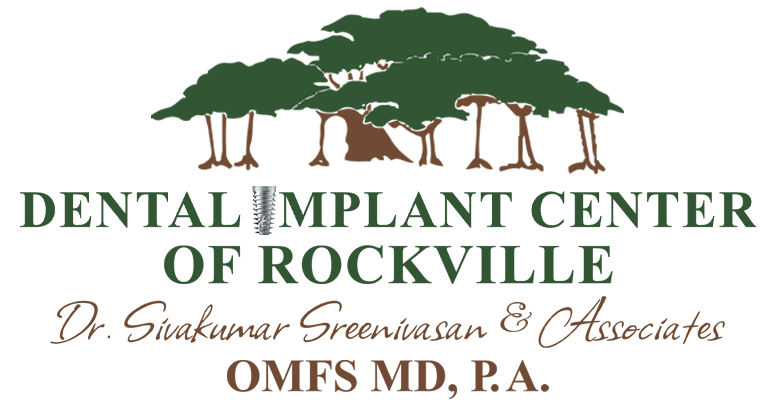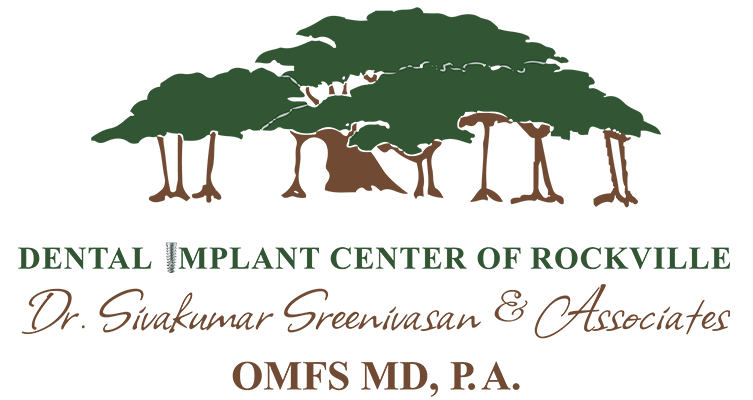When Is Bone Grafting Needed?

When it comes to maintaining oral health, the integrity of your jawbone plays a critical role in the overall health and function of your teeth and mouth. Your jawbone not only holds your teeth firmly in place but also supports the structure of your face, influencing your appearance and overall dental functionality. However, what happens when the jawbone begins to weaken or deteriorate? That’s where bone grafting steps in—a versatile and highly effective procedure designed to strengthen and restore compromised jawbones, paving the way for a healthier, more functional smile.
At the Dental Implant Center of Rockville, we frequently work with patients who can benefit from bone grafting, particularly those preparing for dental implant placement or undergoing other restorative procedures. But this often raises an essential question: when is bone grafting actually necessary? Below, we'll walk you through the common scenarios where bone grafting becomes an invaluable solution, ensuring you’re informed about how it works and why it matters.
Bone Grafting for Dental Implants
One of the most frequent reasons for bone grafting is preparing the jawbone for dental implants. For dental implants to function successfully, sufficient bone density is critical. Without a strong and dense jawbone to integrate with, the implant may fail to anchor securely, ultimately compromising its stability and longevity. Unfortunately, many patients experience bone loss after losing a tooth, particularly if the tooth has been missing for an extended period. This is because the jawbone requires stimulation from the tooth’s root to maintain its mass—when a tooth is gone, the bone in that area gradually resorbs.
Bone grafting is a game-changer in these cases. By rebuilding and strengthening the jawbone, the procedure creates a stable foundation for dental implants, significantly increasing their success rate. The dental implant is then able to integrate seamlessly with the restored bone, ensuring durability and functionality for years to come. At the Dental Implant Center of Rockville, we carefully assess each patient’s bone health to determine whether grafting is required. If you’re considering implants and are concerned about bone loss, our team can provide detailed guidance on what to expect and how bone grafting can enhance your results.
Bone Grafting After Trauma or Infection
Jawbone deterioration isn’t limited to tooth loss; it can also result from trauma, infection, or congenital conditions. Accidents and injuries to the jaw can lead to fractures, bone damage, or even bone loss over time. Similarly, congenital defects may leave sections of the jaw underdeveloped, affecting both appearance and function. In other cases, severe infections such as periodontal (gum) disease can cause the jawbone to erode. Without proper intervention, this bone loss can weaken the jaw, making it difficult to support teeth or proceed with restorative dental work.
In these situations, bone grafting offers a reliable solution by rebuilding lost or damaged bone. The procedure not only restores the jaw’s strength and structural integrity but also ensures patients are able to move forward with critical treatments like dentures, bridges, or implants. Bone grafting brings both form and function back to the smile, offering renewed confidence and improved oral health. Think of bone grafting as an essential step in repairing the damage caused by trauma, disease, or developmental issues, allowing patients to achieve a fully restored and functional smile.
Bone Grafting for Sinus Augmentation
The upper jaw presents unique challenges for patients seeking dental implants. Over time, tooth loss in the upper molar region can lead to a condition known as sinus pneumatization, where the sinus cavity expands downward, reducing the amount of bone available for implant placement. When this occurs, anchoring an implant becomes difficult without first addressing the lack of bone volume.
This is where a specialized form of bone grafting, called sinus augmentation or sinus lift, comes into play. By adding bone tissue to the floor of the sinus cavity, we can increase the height and density of the upper jawbone, creating a stable foundation for dental implants. This procedure ensures that even patients with limited bone in the upper jaw can enjoy the benefits of implants without facing complications. At the Dental Implant Center of Rockville, our team has extensive experience performing sinus lifts and other advanced grafting techniques, ensuring comfort and optimal outcomes for our patients.
Types of Bone Grafting Materials
Bone grafting can be performed using a variety of materials tailored to each patient’s needs. Options include autografts (bone harvested from the patient’s own body), allografts (donor bone), xenografts (bone from animal sources), and synthetic materials designed to mimic natural bone. Each type has its own unique advantages, and our team will help you determine the best option based on your condition, treatment goals, and overall health.
The Path to a Healthier Smile
While bone grafting may sound intimidating to some, it is a routine, well-established procedure with life-changing benefits. Whether you need it to prepare for dental implants, recover from trauma, or address bone loss from gum disease, bone grafting helps create a solid foundation for lasting oral health and functionality. The procedure is typically performed with advanced techniques and materials, ensuring both safety and effectiveness.
If you’re considering bone grafting or simply want to learn more about your options, the Dental Implant Center of Rockville is here to help. Our experienced team will carefully evaluate your needs, explain the process, and guide you every step of the way. Visit our website to learn more about bone grafting and other restorative procedures, or contact us directly to schedule a consultation. A healthier, stronger smile is just a call away!
Frequently Asked Questions About Bone Grafting
What is bone grafting, and how does it work?
Bone grafting is a surgical procedure used to repair or grow new bone in areas of the jaw where bone loss has occurred. It involves transplanting small pieces of natural bone (from a donor site or synthetic materials) to the affected area. Over time, the graft material integrates with the existing bone, regenerating tissue and creating a stable foundation.
Is bone grafting painful?
While bone grafting is a surgical procedure, modern techniques and anesthesia make it relatively comfortable for patients. You may experience mild swelling or discomfort in the first few days after surgery, but this can be easily managed with medication and aftercare. Your oral surgeon will provide detailed instructions to help ensure a smooth and quick recovery.
At the Dental Implant Center of Rockville, we specialize in creating strong foundations for healthier, more confident smiles. Serving Rockville, North Bethesda, and beyond, we offer compassionate, expert care tailored to meet your unique dental needs. Contact us to learn more or schedule your consultation today.
Recent Posts
Contact Us
Twice a Month

